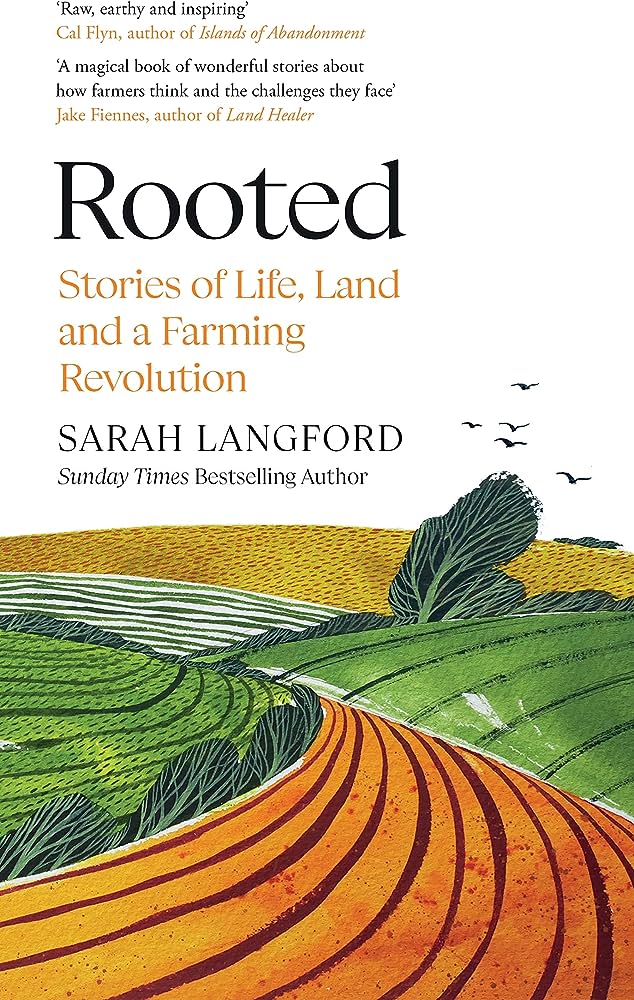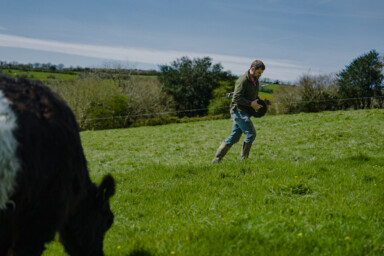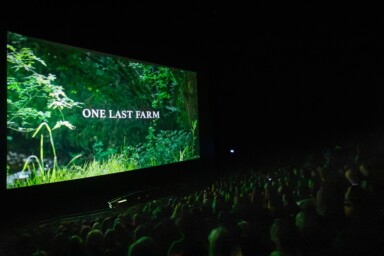Are you in search of some new reading material? Wind down for the summer with a few recommended reads from the SFT team.
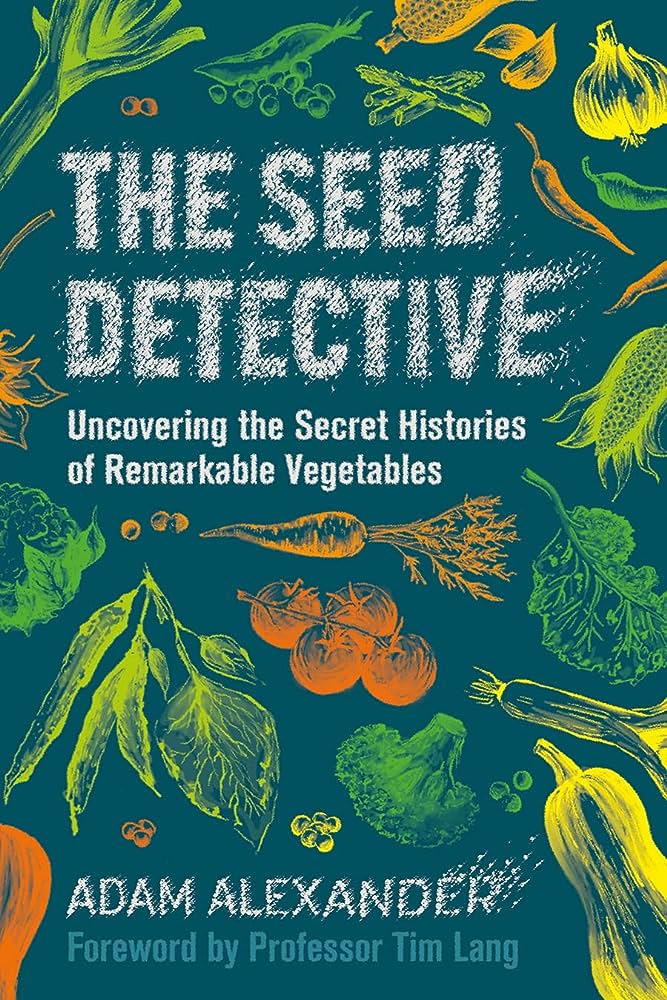 The Seed Detective: Uncovering the Secret Histories of Remarkable Vegetables, by Adam Alexander
The Seed Detective: Uncovering the Secret Histories of Remarkable Vegetables, by Adam Alexander
Reviewed by Alicia Miller
Adam Alexander is a seed detective – he’s travelled the world looking for seeds of myriad varietals that have been hidden away in distant places across the world. These are the seeds that could save us as we move through the next century with climate change wreaking havoc across the globe.
What is so engaging in The Seed Detective is the infectious drive that Alexander has to uncover the histories of vegetables that most of us don’t think twice about. It’s a reminder of how vital it is to know and understand the evolution of our vegetables and what’s at stake as myriad local varietals disappear.
Alexander starts with the pea which developed widely across the globe beginning in the Fertile Crescent, where it dates back 8500 years to Neolithic settlements. From there it slowly ‘globalised’ itself, moving eastward towards India and China and westward through Europe, appearing in Britain in the 16th century as the Carlin Pea, a pea once again being celebrated by select growers in the UK. However, the pea’s vast diversity has inevitably declined, as with most contemporary varietals.
The tales of these seeds speak to the immense knowledge that Alexander holds and his stories are full of energy and excitement as well as everything you might want to know about, say, a tomato. Don’t, for minute, assume you know where the tomato first appeared – Peru, not Italy, and possibly via the shores of Asia. Its wild ancestor can still be found in Peru’s coastal regions. The tomato’s heartland is Mexico, from where it transformed from a small fruit to larger one, and it wasn’t until the 19th century that varietals outside of Mexico began to proliferate. Most people know that it is a nightshade, and it is related to vegetables and plants that might surprise you – aubergines, peppers and chillies, potatoes, tobacco, gooseberries, and surprisingly, petunias, to name a few.
If you really want to get to know your food, spend some time with The Seed Detective and you’ll be more literate and informed about the wonder of your vegetables.
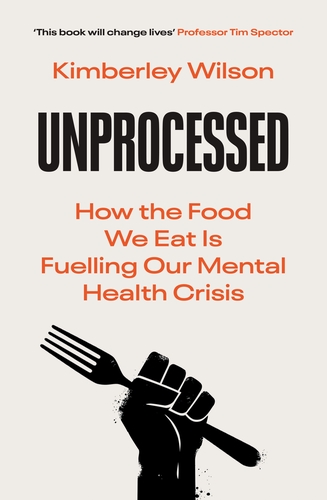 Unprocessed: How the Food We Eat Is Fuelling Our Mental Health Crisis, by Kimberly Wilson
Unprocessed: How the Food We Eat Is Fuelling Our Mental Health Crisis, by Kimberly Wilson
Reviewed by Imogen Crossland
Unprocessed builds a convincing and captivating case for paying close attention to the links between nutrition, brain function and mental health. Western medicine tends to separate the physical from the mental side of healthcare, disconnecting mind from body. In this book, Kimberly Wilson proves that this needs to change.
As a society, our mental health is deteriorating. Whether you look at rates of mental illness in children, neurodegenerative diseases like dementia, memory and concentration levels, or even average IQ, the picture is pretty bleak. At the same time, diets are becoming increasingly ultra-processed at the expense of nutritious whole foods. The result is a widespread deficiency in many essential nutrients, some of which are already known to be vital for brain development and cognitive function, others we are only beginning to understand the importance of.
In a rigorous yet highly accessible way, Wilson breaks down the scientific evidence behind some of the key nutrients which tend to be lacking in modern diets. It may be surprising to find out that the brain is, besides fat tissue itself, the fattiest organ in the human body. This is because building and running a brain requires a lot of energy. One of the key building blocks of brain tissue is an omega-3 called DHA, something which, shockingly, 92% of pregnant women are deficient in. The facts and figures are brought to life through two fictional case studies woven throughout the book, following the lives of Yasmin and Zoe and their children, to show how diet, while not the only factor at play, can influence mental health across the average lifespan, and especially at critical stages of development.
While much of what Wilson has to say is quite alarming, the intention of the book is not to scaremonger. Instead, she aims to empower the reader by sharing her knowledge, not only to help people make informed choices about their own diets, but to instigate a movement demanding action from the UK government. For this, she provides useful ‘action points’ for the reader, as well as a list of her own calls to government. High on the list is the need to address social inequality, because “poor nutrition is both a cause and a consequence of poverty”. Improving access to foods which nourish the mind and body is not the only solution to our mental health crisis, but it will certainly “strengthen the foundations”, especially among the most vulnerable groups in society.
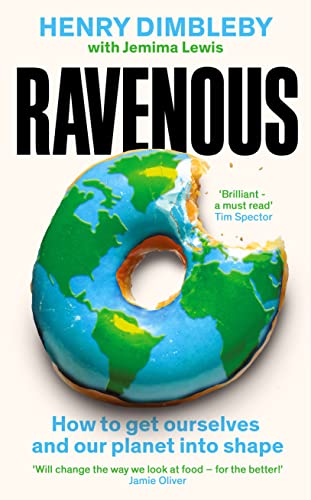 Ravenous: How to Get Ourselves and Our Planet Into Shape, by Henry Dimbleby with Jemima Lewis
Ravenous: How to Get Ourselves and Our Planet Into Shape, by Henry Dimbleby with Jemima Lewis
Reviewed by Bonnie Welch
“The food system is no longer simply a means of sustenance. It is one of the most successful, most innovative and most destructive industries on earth,” writes author of the National Food Strategy, Henry Dimbleby, in the opening chapter of Ravenous.
Over the past seventy years, farming practices in the UK (and across much of the world) have intensified and industrialised, with devastating impacts on climate, nature and biodiversity. It is no coincidence that at the same time, the population has become increasingly unhealthy, with high rates of obesity and diet-related disease. In the UK, 60% of adults are either overweight or obese, a figure expected to rise to 80% by 2060, with huge costs to society in terms of lost workforce productivity, shortened lives and NHS treatments.
The ‘Junk Food Cycle’ is one of Dimbleby’s main concerns. Our predilection for calorie-dense foods, means that companies invest more time and money creating them, which makes us eat more of them and ultimately expands the market (along with our waistlines!) Ultra-processed foods currently make up 57% of our diets. Considering just how unwell this cycle makes so many of us, “Why isn’t there public uproar?” Dimbleby asks.
“Right now, we are trying to fight two fires at once: diet-related disease and environmental destruction.” The latter is where Dimbleby focuses the second half of the book, unpacking the land-sharing versus land-sparing debate, as well as the conflicting positions on natural capital, carbon sequestration and crucially, the role of livestock. Dimbleby also recognises the need for change to be underpinned by harmonised metrics that assess the impacts of farming on climate, biodiversity and health outcomes.
In Dimbleby’s vision for a sustainable and resilient food future, a diversity of approaches will be needed: “Organic farms will live alongside solar-powered, high-rise greenhouses growing fruit and veg in cities. There will be more space for wild landscapes, as well as nature-rich upland farms. This will be made possible by a completely new kind of food production – precision fermentation – which will take some of the pressure off the land.” Practically speaking, governments will need to invest in biodiversity restoration, carbon sequestration and agricultural innovation, and a wide range of public health policies will be needed to ensure everyone has access to healthy food.
While some of Dimbleby’s recommendations – like precision fermentation – remain controversial in terms of their potential role within a sustainable food system, his approach is diverse and inclusive of those on both sides of the ideological spectrum. However, almost all of his recommendations depend on government intervention. The fact that his National Food Strategy was largely ignored doesn’t bode well, but at present it’s perhaps the only comprehensive vision for change that government has.
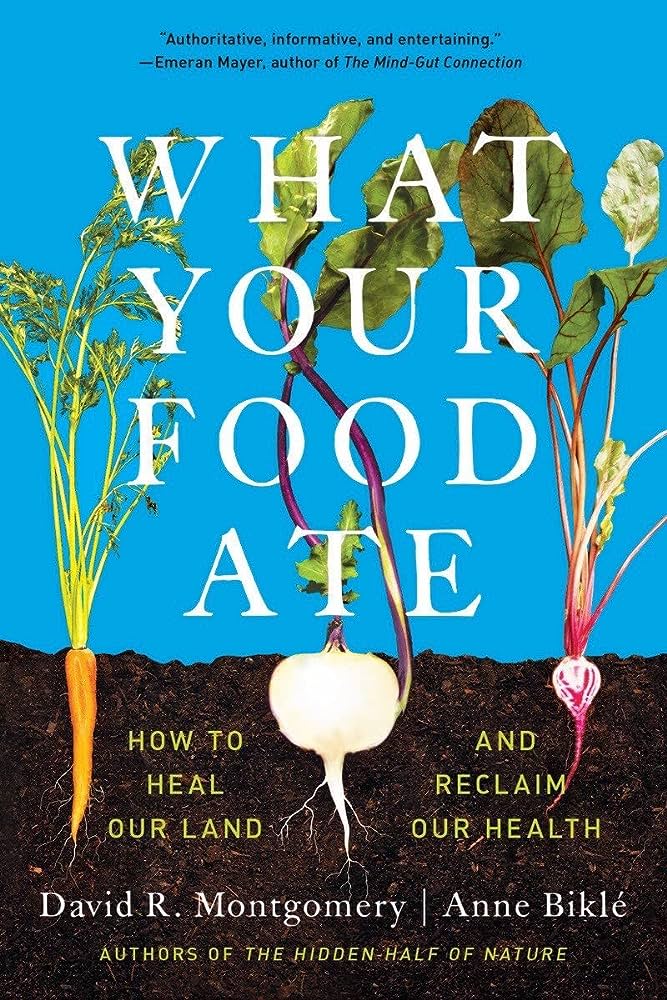 What Your Food Ate: How to Heal Our Land and Reclaim Our Health, by David R. Montgomery and Anne Biklé
What Your Food Ate: How to Heal Our Land and Reclaim Our Health, by David R. Montgomery and Anne Biklé
Reviewed by Victoria Halliday
Does an apple a day still keep the doctor away? According to the authors of What Your Food Ate, the declining health of our soil means that the old proverb may hold less truth than ever.
This latest book, by geology professor David R. Montgomery and biologist Anne Biklé, unravels the threads that connect soil, crops, animals and people. In doing so, it demonstrates how, instead of being diverted by commonly held notions of what constitutes ‘healthy’ food, we should be concentrating our attention on the health of the soil in which those foods are grown; it is this, the authors argue, that truly underpins the nutritional value and health-giving properties of what we eat.
Early warnings of the potentially damaging effects of industrial agriculture and food processing technologies upon planetary and human health provoked a vehement backlash. The authors tell the stories of soil scientist, Sir Albert Howard and organic pioneer, Lady Eve Balfour, both of whom were rebuffed by the scientific consensus of their day. This wasn’t owing to lack of evidence – both were rigorous in their research and observations – but because their findings were in opposition to the chemically based agriculture that was, and all too often still is, lauded as the hallmark of progress. It is the impact of this supposed progress that the authors go on to examine, describing how intensive agriculture has degraded the life of soils and the health of people.
With a strong scientific bent, Montgomery and Biklé dissect each of their focus topics – soil, plants, animals and people. From mycorrhizal networks to worm counts, compost to phytochemicals, and ruminant health to ultra-processed foods, What Your Food Ate explains the ripple effects emanating from our lack of regard for soil health. At times, the points being made can begin to feel laboured and there are occasions when the metaphors err on the heavy-handed (for example, comparing synthetically fertilised crops to “a deer with a broken leg trying to flee a pack of predators”), but this is countered by the book’s generous helpings of insight, rigour and originality.
For those already well versed in these topics, What Your Food Ate offers a clear and engaging synthesis of research, both recent and historical. For readers with less familiarity, it is an eye-opening revelation of just how intricately the health of the Earth’s matter and its beings are connected and the mesmerising symbiosis that exists between lifeforms.
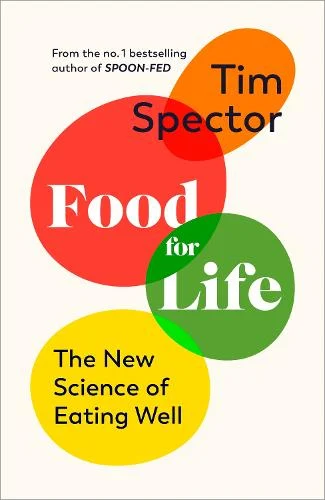 Food for Life: The New Science of Eating Well, by Tim Spector
Food for Life: The New Science of Eating Well, by Tim Spector
Reviewed by Alice Frost
Professor Tim Spector merges lived experience, scientific knowledge and a genuine love of food in his latest book, Food for Life. Spector offers a comprehensive overview of the foods that contribute towards a healthy lifestyle, while debunking some longstanding food myths.
Totalling just over 500 pages, it’s a lengthy read but made more digestible by its categorisation into three parts and handy bullet point tips at the end of each chapter. The first part of the book jumps straight into the science, dissecting the complex nature of the gut microbiome, poetically comparing it to “a beautiful garden which has all of the necessary elements to blossom into a diverse and colourful oasis”.
Spector explains how our diets vary, affecting our individual gut microbiomes, and goes on to explore what constitutes healthy and unhealthy food, separating the food fact from the fiction.
The second part dedicates chapters to specific foods like pasta, meat and cheese, each discussed in finer detail, providing us with the information to better understand our food and to learn where it comes from, how it’s produced and its environmental impact, enabling us to make healthier, as well as tastier, choices. The book concludes with a detailed and practical food table intended to guide your weekly shop and meals.
Food for Life also provides fascinating insight into the psychology behind our food, for example, the connection our brain makes between colour and taste: the redder and shinier an apple looks, the more delicious it must taste (or so we think). Spector explains how food producers and advertisers take advantage of this psychology, by chemically spraying apples to make them appear shinier and brighter in colour, thus boosting revenue.
The book also touches on ultra-processed foods, which have become an increasingly prominent topic in recent years, as well as the rise of plant-based alternatives to dairy and meat in an ever-changing world where the impact on climate and nature have risen to the top of many people’s agenda when making food choices. Spector reveals how even these seemingly more ‘climate friendly’ foods aren’t exempt from their own negative environmental impact.
Food for Life successfully provides us with the tools and knowledge for making better food choices for people and planet, reminding us that, essentially, “the immense power of food is in your hands.”
If you would like to hear more from Professor Tim Spector, you can listen to him speaking with SFT CEO Patrick Holden on this episode of our podcast.
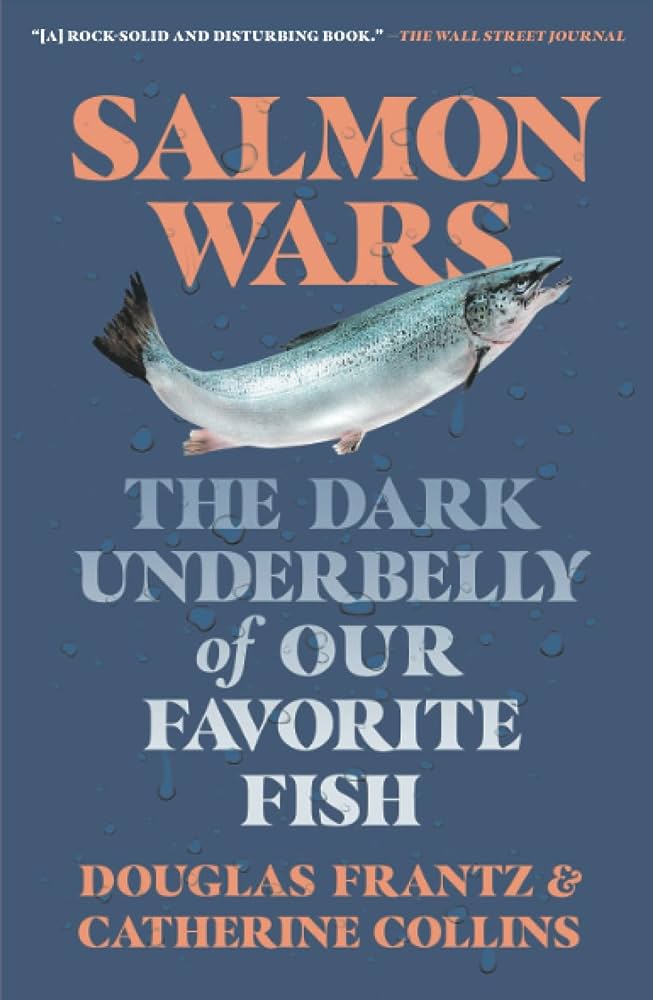 Salmon Wars: The Dark Underbelly of Our Favorite Fish, by Douglas Frantz and Catherine Collins
Salmon Wars: The Dark Underbelly of Our Favorite Fish, by Douglas Frantz and Catherine Collins
Reviewed by Alicia Miller
Salmon Wars tells a deeply sad tale of the degradation of a vital species that, for millennia, has been an important source of sustenance and nutrition for many coastal communities. Salmon populate both the Atlantic and Pacific oceans, and in the 1970s, salmon farming began along these coasts; in a relatively short space of time, a wild food source that was full of omega-three and micronutrients, making it richly nutritious, became a cheap commodity produced from sickly salmon. Industrially farmed salmon are laden with pesticides that are often used illegally, pumped with antibiotics, sometimes genetically modified, rife with PCBs (polychlorinated biphenyls – highly carcinogenic chemicals), and tortured by predatory sea lice. So, despite salmon’s enduring popularity, it is not what it once was. What’s more, the practices commonly used in salmon farming are threatening surviving wild salmon, numbers of which are declining rapidly.
The book tracks a well-known playbook of disinformation, bad practice and denial by large-scale corporations, one that often includes cover-ups and corporate malfeasance. Salmon farming has spread across the world, decimating the lives of small-scale fisherfolk, especially off the coasts of West Africa and Chile. This is because the smaller fish, upon which many fishing communities depend, are caught and used as feed for farmed salmon (which are carnivorous). In some places, the salmon farms’ huge demand for these smaller fish has pushed the food security of local communities to the brink. As Frantz and Collins explain, “When industrial-scale trawlers sweep up millions of tons of native fish, they are not only taking nutritious food off peoples’ tables but also robbing them of jobs. In Africa, the risk of food insecurity is particularly high because the continent is one of the few places where population growth is expected to increase in the coming decades.” The major players in salmon farming clearly care little for the impact that they have on these places.
Whether it’s safe to eat farmed salmon is a significant point of debate – though the evidence of its nutritional deficits and potential health risks is now more widely recognised. Unsurprisingly, the companies involved in large-scale salmon farming do their best to greenwash their product and there have been numerous legal suits questioning the veracity of the language they use: ‘all natural’, ‘sustainably sourced’, ‘eco-friendly’ are far from truthful. The question that hangs in the air, Frantz and Collins point out, is: “What role does government play in ensuring the safety of this increasingly popular food, one that is often recommended for children and pregnant women? The answer is: Not much. So, whom can you trust when you’re browsing for salmon at your local store? Right now, nobody.”
And don’t miss…
Rooted: Stories of Life, Land and a Farming Revolution, by Sarah Langford
Reviewed by Isabel Eaton
When circumstance leads Sarah Langford and her young family away from the city and out to a small arable farm in the depths of Suffolk, they embark upon a journey into the world of regenerative farming which will profoundly deepen their connection with nature, the seasons and the land for which they are now responsible.
As Sarah and her husband work to undo the impacts of intensive agricultural practices on their land – replanting hedgerows, introducing grazing sheep and cattle and experimenting with direct drilling and cover crops – the family see skylarks return to feed amongst the unsprayed stubble, butterflies swarm to the thistles of their field margins and the farm comes alive with nature and produce.
Langford is greatly influenced by the experiences of the farmers she meets along the way. These ‘rebels’ have ignored the critical gaze of neighbours and the pessimistic predictions of land agents, to walk their own path. By moving away from the intensive livestock systems and chemical-sprayed monocrops which have brought many of them close to financial and mental ruin, they have each found a renewed passion for farming and greater financial security.
Offering an insight into the past, present and future of English farming, Rooted is a highly readable and personal insight into regenerative agriculture and its potential to heal the rift between farming and nature.

